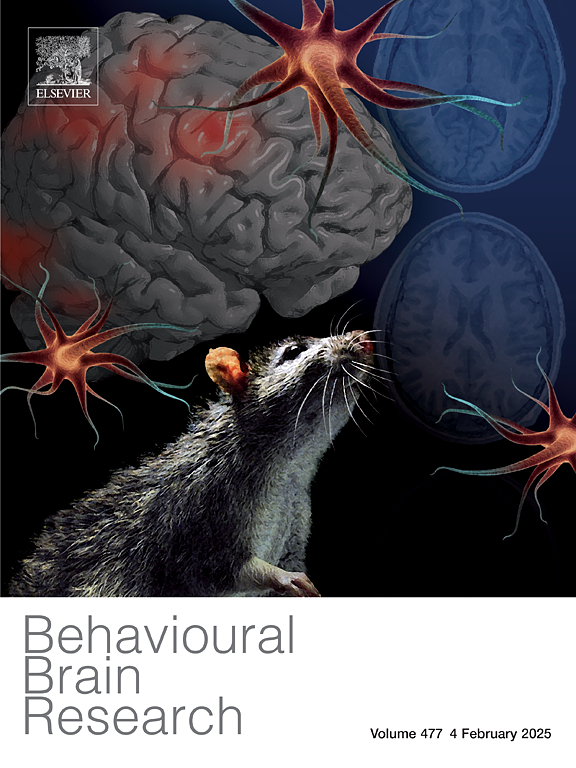Neuroprotective effect of nano-carboxymethyl chitosan from Doryteuthis sibogae against rotenone-induced Parkinson’s disease in the zebrafish model
IF 2.6
3区 心理学
Q2 BEHAVIORAL SCIENCES
引用次数: 0
Abstract
This study investigates the neuroprotective effects of N-carboxymethyl chitosan (N-CMC) against rotenone (ROT)-induced Parkinson's disease (PD) in a zebrafish (ZF) model. In vivo experiments revealed that ROT-exposed ZF larvae exhibited reduced locomotor activity, increased edge preference, and impaired touch response, while N-CMC treatment significantly improved these behavioral parameters. The reactive oxygen species (ROS) levels in ROT-exposed larvae were elevated (37.75 %) but decreased with N-CMC treatment (30.28 %). Apoptosis was also reduced from 38.87 % in ROT-exposed larvae to 16.52 % with N-CMC treatment. In vitro studies using the N2A cell line confirmed N-CMC’s neuroprotective effects. In adult ZF, ROT exposure decreased locomotion, and N-CMC treatment reversed these effects, as demonstrated through ToxTrac analysis. Novel Tank and Light/Dark tests showed significant behavioral improvements with N-CMC. Neurotransmitter analysis indicated increased dopamine, GABA, and glutamate levels in ROT-exposed ZF, which were moderated with N-CMC treatment. Gene expression analysis of gap43, syn2a, and tuba1b showed upregulation in ROT-exposed ZF, while N-CMC treatment downregulated these genes. Antioxidant assays demonstrated that ROT decreased SOD, CAT, and GSH levels in the brain, while N-CMC treatment increased these antioxidant levels by 1.3-fold, 7.5-fold, and 1.3-fold, respectively. Histopathology revealed neuronal degeneration in ROT-exposed ZF brains, but N-CMC treatment protected the neuronal loss. This study is the first to explore the neuroprotective and antioxidant properties of N-CMC in a ZF model, indicating its potential therapeutic benefits over conventional ROT-based treatments for PD.
求助全文
约1分钟内获得全文
求助全文
来源期刊

Behavioural Brain Research
医学-行为科学
CiteScore
5.60
自引率
0.00%
发文量
383
审稿时长
61 days
期刊介绍:
Behavioural Brain Research is an international, interdisciplinary journal dedicated to the publication of articles in the field of behavioural neuroscience, broadly defined. Contributions from the entire range of disciplines that comprise the neurosciences, behavioural sciences or cognitive sciences are appropriate, as long as the goal is to delineate the neural mechanisms underlying behaviour. Thus, studies may range from neurophysiological, neuroanatomical, neurochemical or neuropharmacological analysis of brain-behaviour relations, including the use of molecular genetic or behavioural genetic approaches, to studies that involve the use of brain imaging techniques, to neuroethological studies. Reports of original research, of major methodological advances, or of novel conceptual approaches are all encouraged. The journal will also consider critical reviews on selected topics.
 求助内容:
求助内容: 应助结果提醒方式:
应助结果提醒方式:


